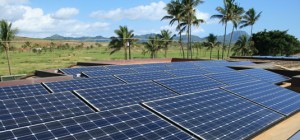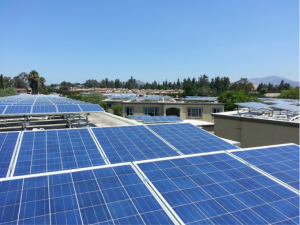Nevada and Hawaii are two states that have taken different, though both scaled-back, approaches to rooftop solar. But the good news for solar advocates is that both states appear to be making progress, for different reasons.
 First, Hawaii. The Aloha State retrenched from the generous net metering retail rate compensation last year. Instead, state regulators pushed a hybrid option that allows customers to either take a wholesale rate for all power they export or get a retail credit for all the power they use on-site (but not for any exports, which are not credited).
First, Hawaii. The Aloha State retrenched from the generous net metering retail rate compensation last year. Instead, state regulators pushed a hybrid option that allows customers to either take a wholesale rate for all power they export or get a retail credit for all the power they use on-site (but not for any exports, which are not credited).
And in a positive development, the new rates are actually leading to enough customer demand that the state may soon reach its cap on new enrollees. As Utility Dive reports, the cap may be met as soon as next month. What that means is that the economics of the reduced incentives are still working for many customers, and it also gives them an incentive to buy a battery, if they go with the retail rate (in order to maximize their on-site usage).
Granted, Hawaii uniquely has ridiculously high electricity rates and tremendous solar exposure, making it not exactly representative. Still, it shows that the economics of reduced incentives can still work, once the price of the panels comes down (or the price of electricity increases).
 Meanwhile, over in Nevada, the state gutted its solar incentives, even going back on its deal with existing customers, leading to stranded assets and betrayed buyers. But now an electoral push may reverse this decision by voter initiative. The utility is fighting back, per the Las Vegas Review-Journal, but so are solar companies. And there are murmurs that the governor is willing to hash out a deal with the solar companies.
Meanwhile, over in Nevada, the state gutted its solar incentives, even going back on its deal with existing customers, leading to stranded assets and betrayed buyers. But now an electoral push may reverse this decision by voter initiative. The utility is fighting back, per the Las Vegas Review-Journal, but so are solar companies. And there are murmurs that the governor is willing to hash out a deal with the solar companies.
My guess is that Nevada will end up with a compromise, perhaps along the lines of the Hawaii path. And in the long run, we know the current generous net metering incentives won’t last forever. So a future that still encourages deployment and also on-site storage in the form of batteries would be a good one.
In the very long term, rooftop generation may not be the best way forward anyway, particularly given that many people don’t have a rooftop with sun exposure or lack sole access to theirs. So we should be simultaneously encouraging more community solar and microgrids as the best way to decarbonize and localize our electricity systems, leading to greater reliability and cheaper prices in the process.
One thought on “Rooftop Solar’s Competing Future: Nevada Vs. Hawaii”
-
Pingback: Rooftop Solar Wars Continue In Hawaii And Nevada | Ethan Elkind
Leave a Reply
You must be logged in to post a comment.


